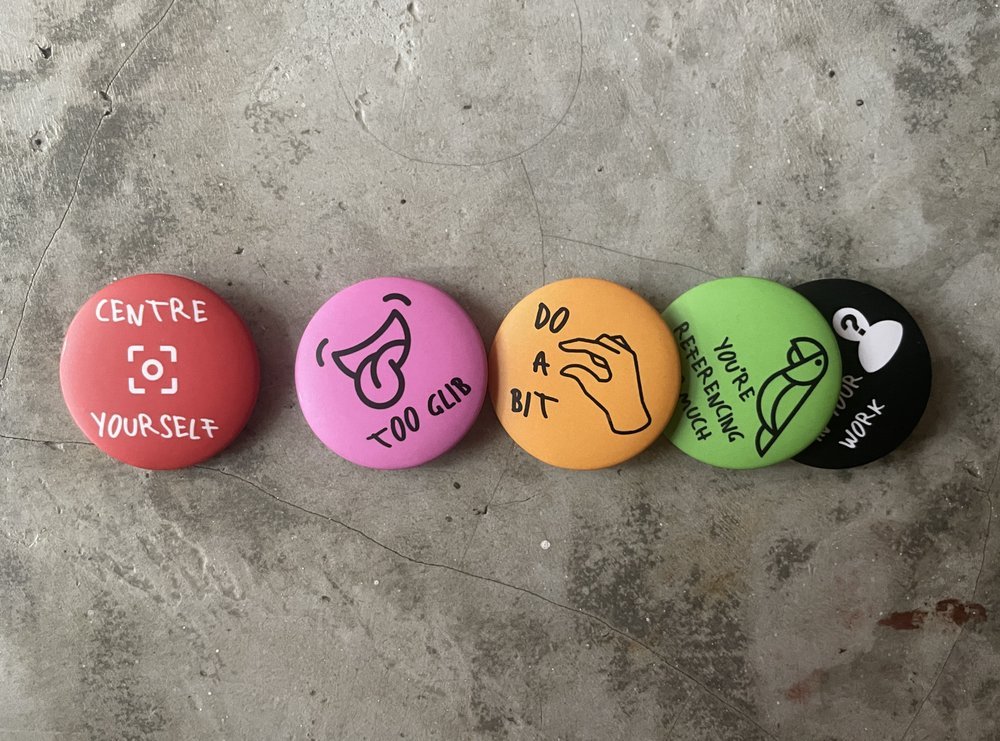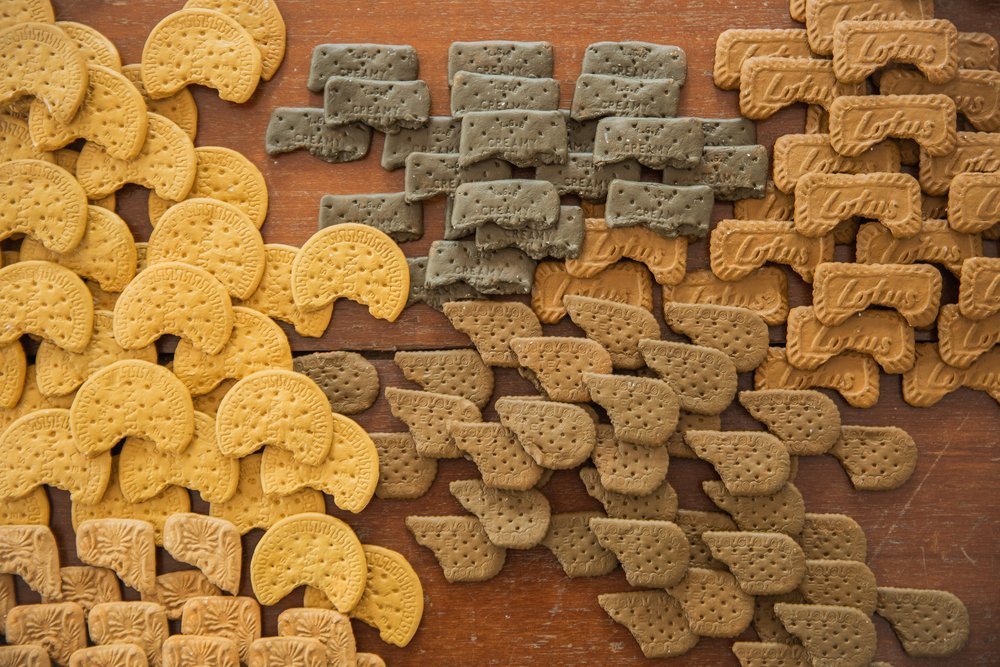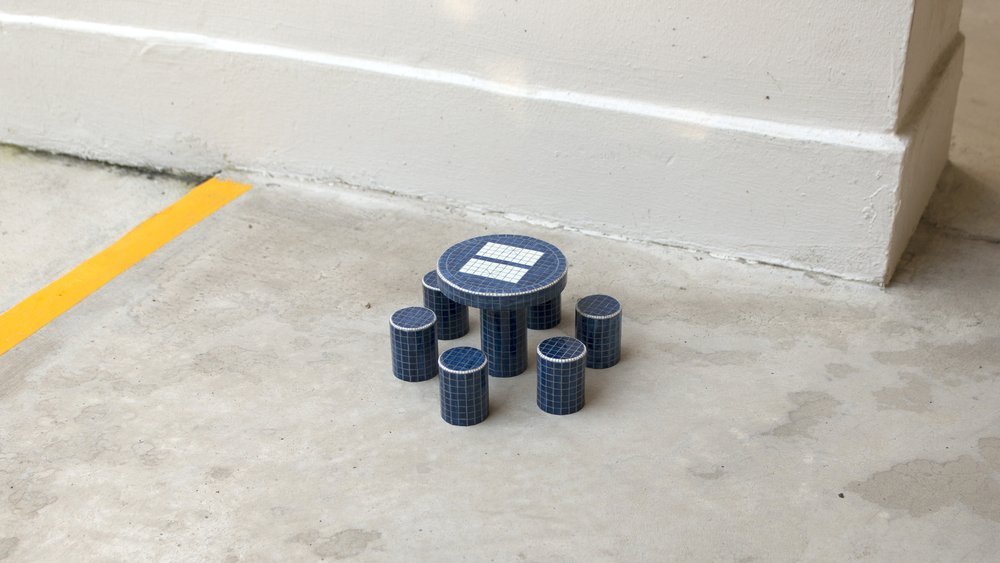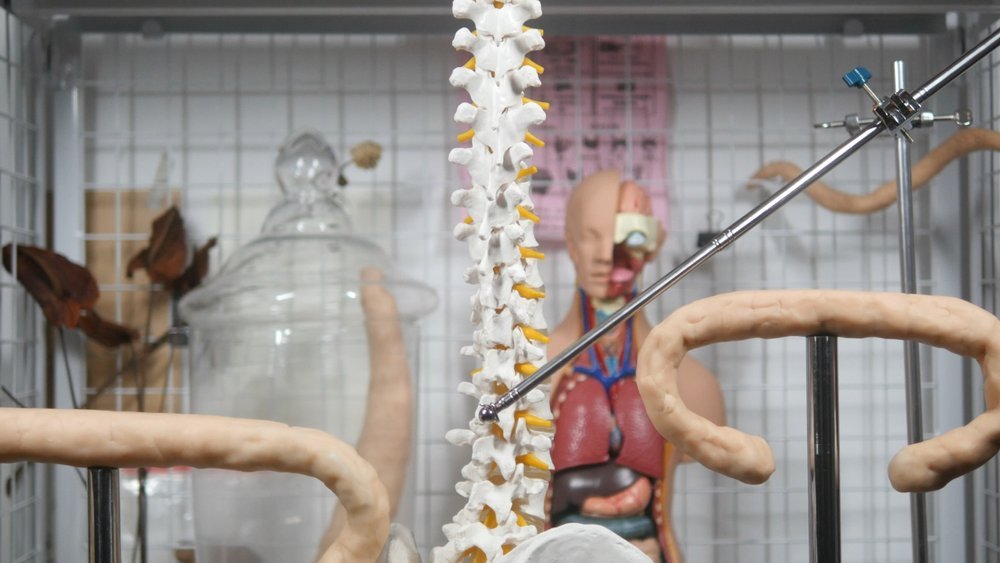How to Make a Bad Imitation
Ashley Hi, Catherine Hu, Khairullah Rahim x Nghia Phung, Michael Lee, Moses Tan and Pat Toh
By Daniel Chong
Over the years, we have republished parts of long-form writing, from catalogue essays to book chapters. This practice is now formalised as part of our ‘Excerpts’ series. To read other writings from the series, click here.
Michael Lee, 'Not Artistic Advice (Detail)', 2022, badge buttons with print on paper, matte lamination and pin backing, 3.8 x 3.8cm each. Image courtesy of the artist.
Editor’s note by Berny Tan, co-curator of ‘Bad Imitation’:
The following text is an abridged version of the curatorial essay for ‘Bad Imitation’, a group exhibition co-curated by Daniel Chong and myself. Across the diverse practices of Ashley Hi, Catherine Hu, Khairullah Rahim x Nghia Phung, Michael Lee, Moses Tan, Pat Toh, as well as Daniel himself, the exhibition presents imitations that are deliberately imprecise, generating new meanings and surprising encounters within the gap between copy and original.
This essay describes how our exhibition was born of concepts that Daniel was grappling with in his own art practice. While Daniel wrote the original version, he gave me leeway afterwards to tease out and clarify his ideas. He did not mind that I took some artistic licence, and integrated some of my own style of prose into his words. Therefore, I view this text as a joint effort, representative of our collaborative style of curating, rooted in mutual support.
‘Bad Imitation’ runs from 14 to 23 January at Tanjong Pagar Distripark, 39 Keppel Road, #05-04, as part of Singapore Art Week 2022.
From “Absurd” to “Bad”
Exactly a year ago, I showed a series of four works collectively titled ‘Absurd Intimacies’. One of these works consisted of hundreds of biscuits made out of hand-painted air dry clay, with a single ‘bite’ in each one. The other three were variations on milk spills created using resin, which had seemingly ‘pooled’ on carpets and various items of clothing. In these spills ‘floated’ pop-coloured cereal, also made out of air dry clay.
Daniel Chong, ‘An orderly, yet fluid, arrangement of single bitten biscuits’ (Manufacturing intimacies; a fallacy) (A ritual of absence), from the series ‘Absurd Intimacies’, 2020–21, air dry clay, acrylic paint, dimensions variable, installation view. ‘Maybe we read too much into things’, curated by Berny Tan at 72-13, 2021. Image courtesy of the artist and curator. Photo by Marvin Tang.
‘Absurd Intimacies’ was shown in a group exhibition called ‘Maybe we read too much into things’, which was curated by Berny Tan, co-curator of ‘Bad Imitation’. It is apt, then, that this body of work became the conceptual and material breeding ground for the exhibition we are curating together. ‘Absurd Intimacies’ appropriated familiar domestic scenes, focusing on objects that held human traces, then threw them into a space of unfamiliarity. At the time, Berny wrote the following description of the series:
This ongoing series explores the fallacy of attempting to replicate past intimacies in the pursuit of future ones. Through the use of the domestic and unassuming, Chong recreates the traces that mark a person’s presence—a bite, a spill, clothes left crumpled on the floor—which then become vessels of lost intimacies in the absence of the human body. His chosen objects are repeated, preserved, and manufactured into strange scenes that convey an uncanny mix of desire, anxiety, and hope.
“Replicate”, “recreate”, “repeated”—I had already been exploring imitative gestures in these works, and in the works that came before them. Here too was the “uncanny”, a shift from reality that was just slight enough to be unsettling, which would later become the cornerstone of this concept of the ‘Bad Imitation’. Even so, I wouldn’t say that ‘Absurd Intimacies’ was about imitation, and that I was thinking about it in those terms. The series was neither about the aura nor the authenticity of the original objects. Yet, people would bring up the works’ imitative qualities time and time again, despite the fact that I feel uncomfortable with this framing even now.
This ultimately left me in a conceptual limbo, unable to fully grasp the effect I was producing with my work. This undefinable thing was equal parts compelling and frustrating, and it began to infiltrate my conversations with other artists throughout the rest of 2021. This was when I began to realise I was not alone in contending with this effect. Going by other names and explanations, it was something that a number of my peers were trying to manifest in their work, without entirely understanding it themselves.
Catherine Hu, study for ‘Twice as Far Away (Blue Tile Table)’, 2021, watercolour, gessoed cardboard, 15 x 15 x 8.5cm. Image courtesy of the artist.
‘Bad Imitation’ grew out of these months of conversations and brooding. I am thinking of the exhibition format as a chance to cast a wider net; to think through the act of and impulse to imitate across multiple works and practices. Putting together this show feels more akin to mapping the space under the folds of blankets or comparing the volumes of shadows. I am trying to find the answers to questions I never knew I needed to ask.
The gaps in a ‘Bad Imitation’
The use of the word “bad” is a sleight of hand. It sets up a duality with what is “good”—or original, or authentic, or faithful—but this is not our exhibition’s premise. ‘Bad Imitation’ is not against perfection, nor is it wholly about failure; it is not about a lack of skill, nor does it challenge the value of art itself. “Bad”, in this context, is more of an intentional deviation. One could say it is a provocation, or even a joke. The word is so damning, so flattening, that it causes a recoil. It opens a space for someone to wonder why it was used at all.
There are in-betweens here, presented by both words in our exhibition’s title. It was Berny who first noted that our interest was in the “gap” that might be opened up by a given work, rather than in the (re)produced object itself. It was this mysterious negative space between the original and copy that was captivating us; the copies and their originals were just bookending that space. An imitation cannot exist without its original, and its existence emphasises the distance between itself and its source material. An imitation that is deemed “bad” widens that distance, without severing the connection. Calling something “bad” demands an explanation for that value judgment, a negotiation of the space between “bad” and “good”.
In thinking through the mechanics of the ‘Bad Imitation’, I look to the subject matter of the artworks in our exhibition. These newly commissioned works reference sources that are commonplace, domestic, everyday, known—the tableaux we observe in public spaces; the objects that surround us in our homes; the scenes we watch on television shows; the words of advice that we receive, which might well be clichés we’ve heard many times before. Even the act of breathing itself, so natural that we are hardly ever conscious of it, is ripe for a “bad imitation”.
Khairullah Rahim x Nghia Phung, reference image for ‘after-party’, 2021. Image courtesy of the artists.
While varying in form, the accessibility of these “originals" is no surprise. A “bad imitation” cannot exist if its viewers have no sense of its original; no capacity to decide if it is ‘bad’ at all. The more relatable and familiar the original, the more material can be created with an imitation’s differences. Something strange must occur: a “bad imitation” must hold on to enough of its original, must create some image, or feeling, or sense of the original, and at the same time say, “I am not like that thing”.
“Something strange must occur: a “bad imitation” must hold on to enough of its original, must create some image, or feeling, or sense of the original, and at the same time say, “I am not like that thing”.”
The ‘Bad Imitation’ is thus not defined by its aesthetic, but rather by a process of latching onto, then departing from the original. The artist then slips their intentions into the space of difference generated by this departure. This gap is not physically represented by the object, but rather conjured in our perception. It is created by the artist, and finished in the mind of the viewer.
Moses Tan, still from ‘A whispering of salt’, 2022, video with sound (HD). Image courtesy of the artist.
You could call this something insidious, like an infiltration; but it is also something more nebulous, like an absorption. Whichever it is, I think of it as more generative than destructive. I imagine an imitation squeezing into the spaces the original has failed to occupy, and expanding them. For a “bad imitation” is not “badly done”; it does not destroy its connections to the original by failing to represent it at all. A “bad imitation” done well, is one that possesses a form of uncanniness, which lingers and tints the viewer’s perception of the source material. It locates the mental space that the original occupies in the viewer’s mind, then stays there, even after the viewer leaves the exhibition. This is what a good “bad imitation” does—it becomes part of the original.
For the full curatorial essay and more information about the exhibition, visit here.
To read other writings from the Excerpts series, click here.
About the writer
Daniel Chong (b. 1995, Singapore) is an artist-curator whose curatorial approach grows from the curiosities within his artistic practice. Drawing from the often uncanny nature of affect, his projects read as extended artistic experiments within the loose framework of an exhibition. Independently, he has curated ‘Melting! Melting!’ (2019) at Gillman Barracks and ‘RAID’ (2016) at Tiong Bahru Air Raid Shelter. He was also Assistant Curator of the non-profit arts organisation OH! Open House from 2019 to 2021.










